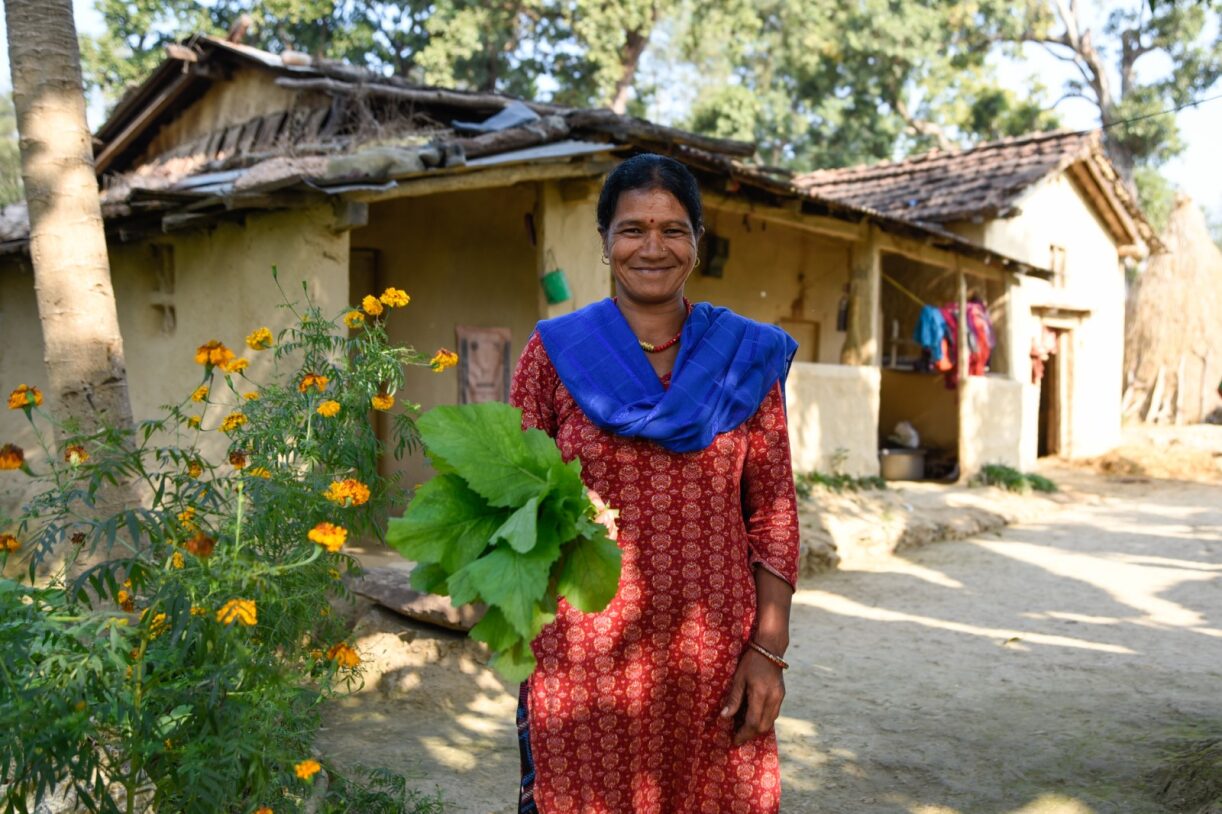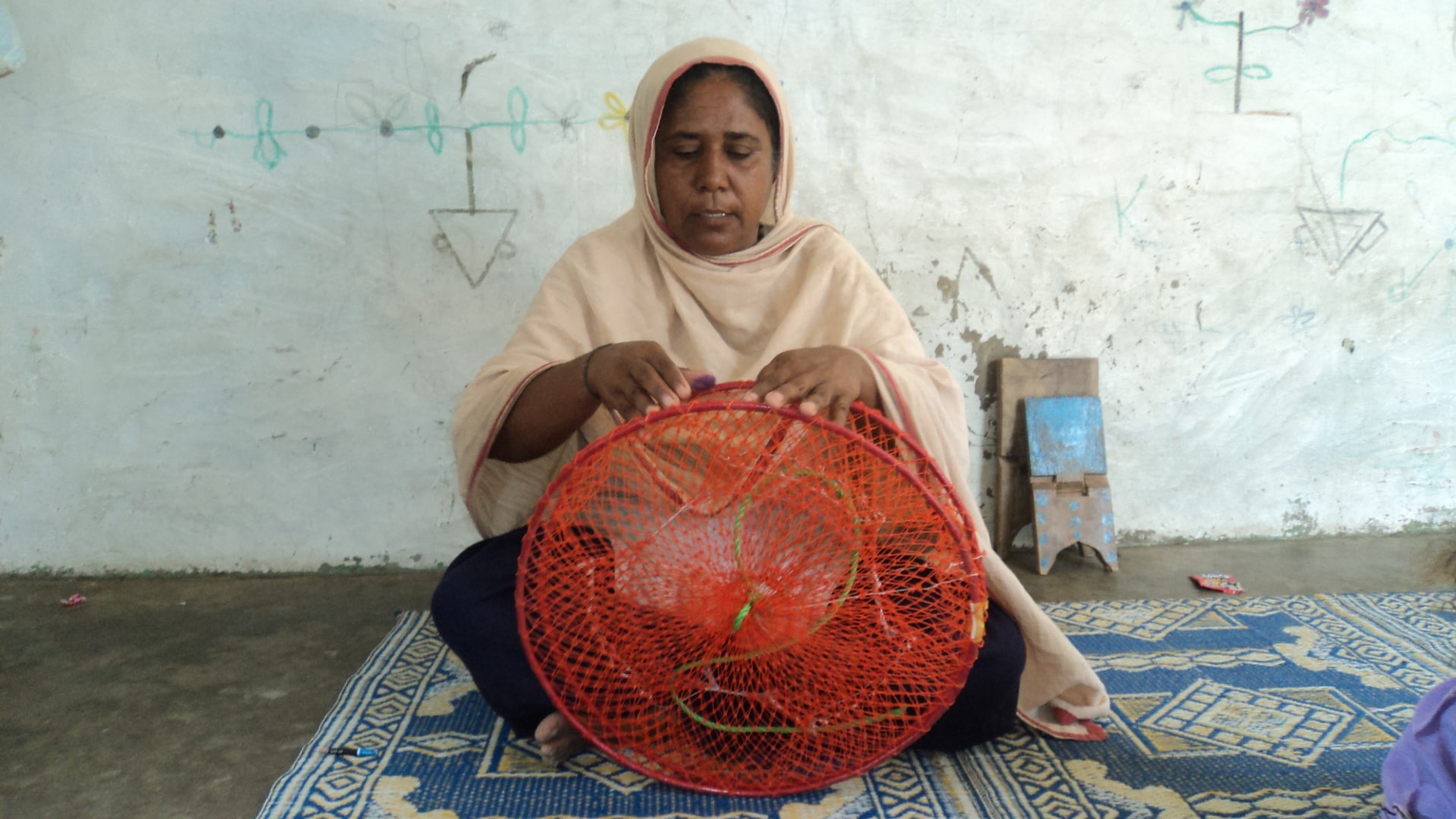Innovation and technological change and education in the digital age as driver of gender equality
This International Women’s Day, we review the ways in which women and girls champion transformative technology and digital education
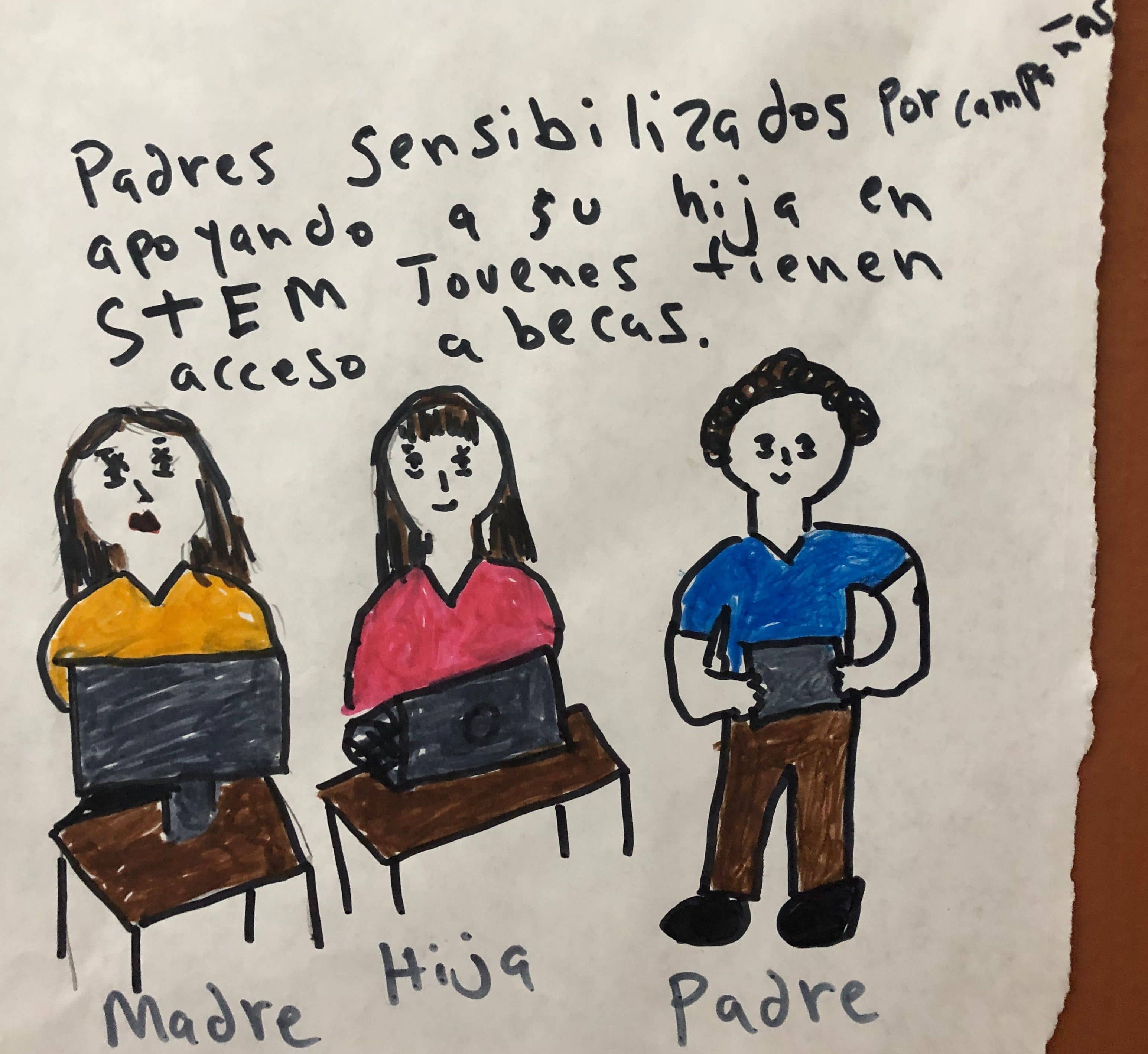 As a part of Guatemala's ccGAP, women in the Verapaz region advise that encouraging women and girls to join STEM careers starts at home with parental support, and requires dedicated effort to cultivate these enabling conditions.
Photo: Ana Sanchez Bachman
As a part of Guatemala's ccGAP, women in the Verapaz region advise that encouraging women and girls to join STEM careers starts at home with parental support, and requires dedicated effort to cultivate these enabling conditions.
Photo: Ana Sanchez Bachman
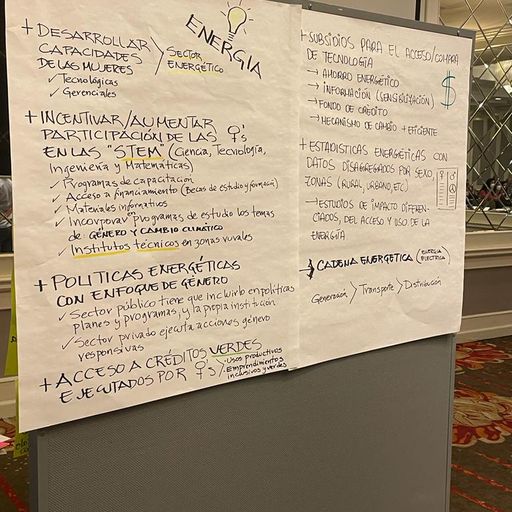 During a Guatemala ccGAP workshop, women from the country met with ministerial focal points to co-design a blueprint on improving gender equality and women's contributions in Guatemala's clean energy future.
Photo: Ana Sanchez Bachman
During a Guatemala ccGAP workshop, women from the country met with ministerial focal points to co-design a blueprint on improving gender equality and women's contributions in Guatemala's clean energy future.
Photo: Ana Sanchez Bachman
Maribel, Alba and Faby huddle around a table, and begin to draw an image, visualizing their ideas and thoughts about how to support girls to participate in science, technology, engineering, and/or mathematics (STEM) careers to help solve climate change challenges.
Indigenous women representatives from the high and low Verapaz region of Guatemala, Maribel, Alba and Faby were part of a breakout session on renewable energy helping refine and further adapt the country’s first Climate Change Gender Action Plan (ccGAP). The ccGAP process was designed by IUCN to support governments in collaborating with local women’s groups and leaders to co-develop a national blueprint of gender-responsive climate actions that complement Nationally Determined Contributions (NDCs) to the United Nations Framework Convention on Climate Change (UNFCCC), national climate strategies, and gender equality policies. In Guatemala, IUCN has been working with the United States Agency for International Development (USAID) through its Advancing Gender in the Environment (AGENT) partnership to support the creation of a ccGAP that is driven by Guatemalan women, for national action.
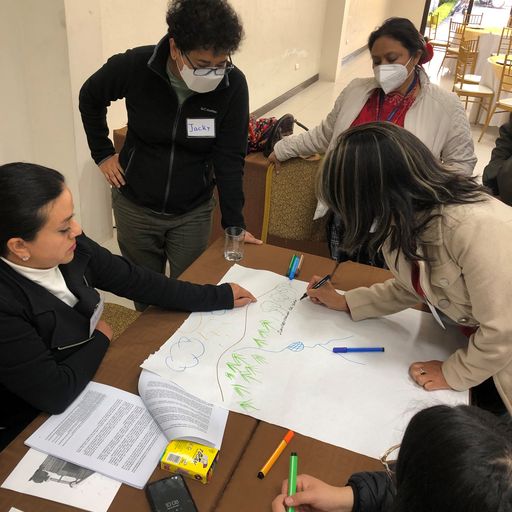 IUCN experts like Jackie Siles (second from left) work closely with women from across Guatemala and government ministries to co-develop and define a participatory national Climate Change Gender Action Plan (ccGAP).
Photo: Ana Sanchez Bachman
IUCN experts like Jackie Siles (second from left) work closely with women from across Guatemala and government ministries to co-develop and define a participatory national Climate Change Gender Action Plan (ccGAP).
Photo: Ana Sanchez Bachman
Together, Maribel, Alba and Faby reviewed the draft ccGAP, which was co-produced by an earlier series of national level workshops with government, civil society, and diverse women’s groups, studying the proposed plans to support “EmPOWERed Ingenious Girls” (Niñas Ingeniosas con Energía) to encourage girls to pursue STEM careers that will drive a clean energy future. They reviewed plans for open school, science and technology fairs and festivals, proposals to promote the enrollment of girls and young women in stem, promoting corporate social responsibility programmes that provide scholarships to girls and young women. Yet, something felt missing – together they drew an image of a girl and her parents, and adding a comment to refine an activity in an action plan they are reviewing:
“We need to talk to the parents, not just the girls – we need to sensitize parents to believe and support that girls – not only boys – can thrive and succeed and enjoy STEM careers, and it starts with the toys we buy and the encouragement we give girls and boys at home.”
This, and other inputs collected around Guatemala, led to edits that improve and strengthen the draft ccGAP, which is currently under refinement. And further insights around the globe concur that the inclusion of women and girls in technology, innovation, and digital spaces is key for gender-responsive environmental action.
 Milagros Becerra is a young woman geographer who has dedicated her life to science, working in Geographic Information Systems to deliver information and data critical for climate and conservation action.
Photo: Milagros Becerra
Milagros Becerra is a young woman geographer who has dedicated her life to science, working in Geographic Information Systems to deliver information and data critical for climate and conservation action.
Photo: Milagros Becerra
In Peru, Milagros Becerra is a 27 year-old geographer working at Conservation Amazonica, contributing to NASA’s SERVIR Amazonia hub operations. She recounts that a career in STEM for young women can indeed be a challenging journey. Indeed, according to UNESCO, women make up 30-45% of scientific researchers. During her professional experience in Geographic Information Systems (GIS), she noted she was often recruited to serve in assistant roles instead of leadership roles offered to her male peers.
“I had to learn other tools and skills to show that I was able to do the work.”
As this career experience is often reflected in the reality of other women GIS specialists, Milagros notes that women geographers today often play management roles. But her dream is to work in GIS programming and application – a field where there are still few women. At her current role working with the SERVIR Amazonia platform, she has found a space that she feels genuinely and meaningfully promotes an equitable and inclusive work environment that champions gender equality. Milagros notes that valuing diversity improves GIS as women geographers and engineers are often successful in communicating and teaching other people about SERVIR tools and maps and how to use them.
“We are able to tell a technical story to people and it is easy for them to learn.”
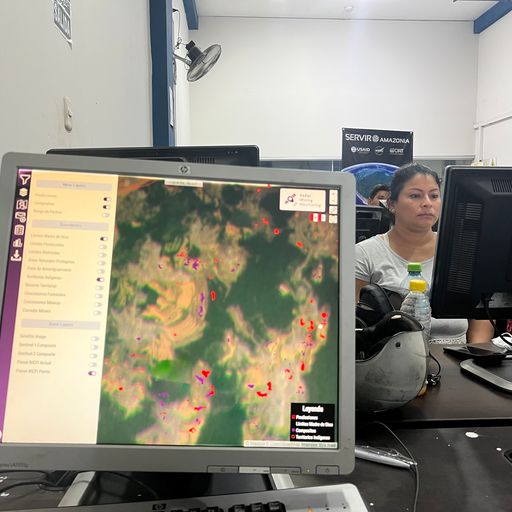 Through NASA's SERVIR program, IUCN supported a gender analysis in the Madre de Dios region of Peru. Here women use SERVIR Amazonia technology to map information and data for climate resilience planning.
Photo: Milagros Beccera
Through NASA's SERVIR program, IUCN supported a gender analysis in the Madre de Dios region of Peru. Here women use SERVIR Amazonia technology to map information and data for climate resilience planning.
Photo: Milagros Beccera
At SERVIR Amazonia, she also worked with IUCN, which provided gender analysis support in the region through AGENT. Together, IUCN and SERVIR Amazonia collaborated to understand the diversity of needs and experiences derived from the use of a geospatial service and design adjustments accordingly while also determining the extent to which illegal mining affects gender dynamics, particularly for Indigenous Peoples in Madre de Dios. Not only does sex trafficking of women and girls accompany illegal mines, the analysis found that women face the greatest digital gap in the region, with limitations to cell phones, real time connections, and ICT applications posing significant barriers to local women-run and supported enterprises. These findings are resulting in the design of new potential activities targeting women and girls in STEM and digital literacy so that they have more information about climate change, temperature shifts, and related threats to base conservation actions on.
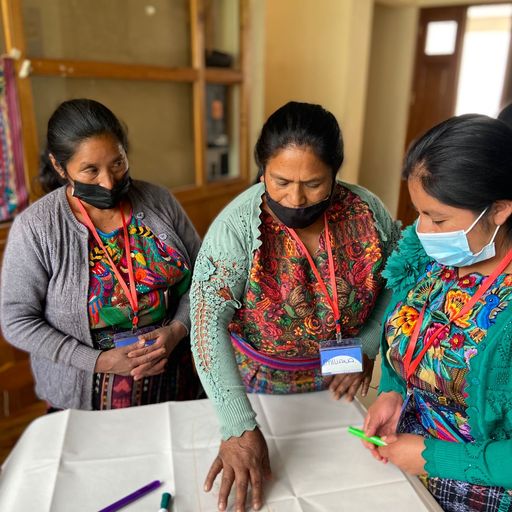 Indigenous women participating in an IUCN project in Guatemala's Altiplano region discuss and may key issues that they face in relation to climate resilience.
Photo: Jackie Siles, IUCN
Indigenous women participating in an IUCN project in Guatemala's Altiplano region discuss and may key issues that they face in relation to climate resilience.
Photo: Jackie Siles, IUCN
IUCN finds similar experiences in the Altiplano region of Guatemala where partners are working to strengthen the resilience of livelihoods against climate change threats in upper watersheds. Here, the project aims to provide funds with equal access to women and men. However, the project recently made pivots when they realized that women – many from local Indigenous communities – also faced a major digital divide that prevented their access to funds and decided to conduct technical support and training operations to increase women’s accessibility to application platforms and processes. For women here, the digital divide quite literally poses a real life firewall to livelihood funds and opportunities.
Altogether, continued innovation and technological progress presents numerous opportunities for the globe. But so far, women are being left behind in this digital age and much is needed. As parties and civil society convene at the 67th Commission on the Status of Women this International Women’s Day to advance gender equality and female empowerment in the digital age – we must also ensure that digital spaces also advance specific attention to the threats it may hold for women environmental defenders as well.
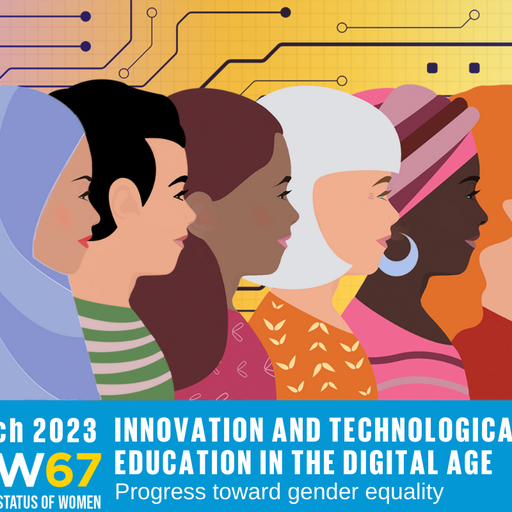 Photo: UN Women
Photo: UN Women
As CSW 67’s zero draft conclusions find, “the magnitude of technology-facilitated gender-based violence and the emergence of new harmful forms of societal narratives which undermine women’s online expression, forcing women and girls to self-censor, de-platform or reduce their interaction in online spaces, limiting their participation in public life and the enjoyment of human rights.” In its publication on Gender-based violence and environmental linkages: the violence of inequality, IUCN documented that women environmental human rights defenders face threats that explicit doctored photos of them would be distributed online if they did not cease their environmental defence activities. Unfortunately organisations across the globe report similar activities, with few solutions or resources to counter them. With this in mind, in the coming years, IUCN through the Resilient, Inclusive and Sustainable Environments (RISE) grants challenge, will work with an Indigenous network to address this issue among other forms of gender-based violence that women environmental defenders can be at risk for.
To ensure that the women of the Altiplano can equitably access opportunities managed through digital spaces – that women environmental defenders are able to navigate the digital space with safety for their dignity and security – that women in Madre de Dios can access all the tools and platforms that help them build climate resilience while improving their enterprises – or that little girls in Antigua can dream and be supported to be part of STEM like Milagros – we can together call for “DigitALL” inclusion.
Disclaimer
Opinions expressed in posts featured on any Crossroads or other blogs and in related comments are those of the authors and do not necessarily reflect the opinions of IUCN or a consensus of its Member organisations.
IUCN moderates comments and reserves the right to remove posts that are deemed inappropriate, commercial in nature or unrelated to blog posts.

